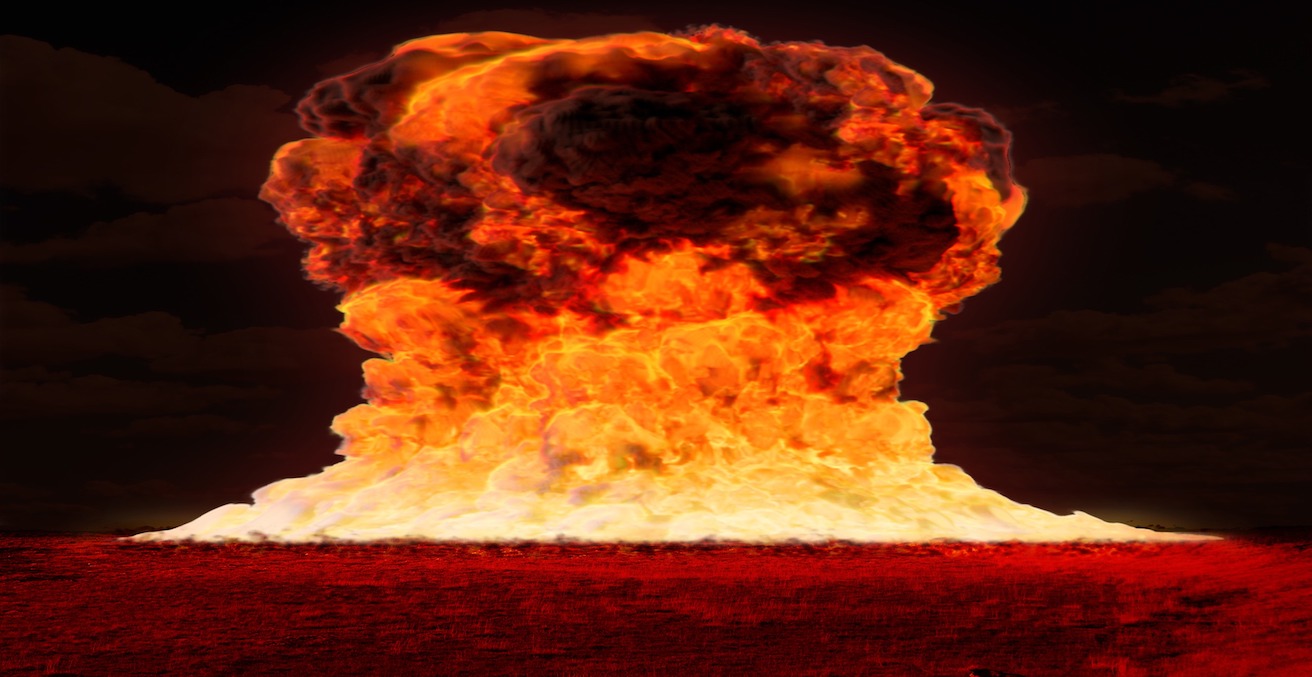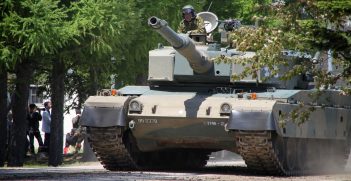Nuclear Weapons: A Clear Case for Prohibition

There are really only two ways of responding to the existential threat posed by nuclear weapons. We can deny the threat, or we can affirm it and work to remove it.
We deny the threat, most obviously, when we claim there isn’t one—that nuclear weapons have an exclusively deterrent function; that they will never actually be used. We deny it, too, when we choose to believe that the Nuclear Weapon States (NWS) are serious about their nuclear disarmament obligations under the Nuclear Non-Proliferation Treaty (NPT). And we deny it, perhaps most profoundly, by failing to imagine what a nuclear war would be like, and what it would mean for those who survived it.
We affirm the threat, most obviously, when we don’t deny it—when we acknowledge the fact that nuclear war is possible. We affirm it, too, when we recognise that the nuclear-armed states have no intention of dismantling their nuclear weapons programs—that they are in fact committed to at least preserving and, in most cases, enhancing their nuclear weapons capabilities. And we affirm it, most importantly, by accepting that with this understanding comes an inescapable obligation—the obligation to support all peaceful efforts to rid the world of these terrible weapons whose use, in any circumstances, would be a crime against humanity.
There are no grounds for complacency, not least because so many of the world’s conflicts, and conflicts-in-waiting, are driven, or underwritten, by opposing nuclear-armed states—viz., currently, Syria, Iran and the Strait of Hormuz, Kashmir, the Korean Peninsula, and the South China Sea. While there is no immediate reason to suppose that any of these will lead to nuclear war, there is equally no reason to believe they could not do so. The assumption that common sense must inevitably prevail—if only because the alternative is unthinkable—is not sustainable.
We deceive ourselves, too, when we accept the assurances of those who would have us believe that multilateral nuclear disarmament will happen when the international security environment permits. That day will never come for most nuclear-armed states, while for others it will never be a day they have in common. States, it must be said, generally prefer security to peace, and security—because it leans so heavily on fear and suspicion—is inherently unstable. It may be lamentable but history teaches us, time and again, that this is the way things are—which is why we cannot afford to have weapons of mass destruction at our disposal, because we will use them.
Deterrence, if it may be said to have any credibility at all, must be joined to a viable multilateral nuclear disarmament strategy, in the absence of which it is eventually bound to fail. The nuclear-armed states have no such strategy. Nuclear weapons have both strategic and, increasingly, tactical offensive value for them. There are scenarios for their use, any one of which may one day serve in practice to demonstrate that deterrence is, finally, an illusion. But we may as easily stumble, as we could one day step, into a nuclear war—as the result of a systems failure, an ill-judged provocation, or a false radar reading. Meanwhile, the world’s two largest nuclear powers, Russia and the United States, have made it clear that they prefer nuclear posturing to restraint and seem determined to drag the world back into a Cold War nuclear standoff.
We are not, though, powerless to change the situation, when we can see it for what it is.
The Nuclear Non-Proliferation Treaty (NPT) has enjoyed considerable success as an instrument of non-proliferation. But the treaty also requires the five recognised Nuclear Weapon States (NWS) “to pursue negotiations in good faith on effective measures relating to . . . nuclear disarmament,” and this they have not done. As a disarmament treaty, the NPT has been an abject failure—not least because the United Nations’ only dedicated multilateral disarmament forum (the Conference on Disarmament) has been essentially moribund since the adoption of the Comprehensive Nuclear-Test-Ban Treaty (CTBT) in 1996.
The Treaty on the Prohibition of Nuclear Weapons (TPNW) was negotiated outside the Geneva-based Conference on Disarmament and adopted at the United Nations in New York, with the support of 122 countries, on 7 July 2017. Unlike the NPT, it delegitimises nuclear weapons and provides a clear pathway towards abolition. At the same time, it explicitly affirms the need for “full and effective implementation” of the NPT and, against its critics, can hardly be said to undermine something—a multilateral nuclear disarmament process—which simply does not exist. The threat of further nuclear proliferation comes not from the TPNW but from the NPT’s failure to drive nuclear disarmament under its Article VI. The anger and frustration to which this gives rise among non-nuclear-weapon states has now found an outlet in a new multilateral disarmament instrument. The TPNW’s rejection by the nuclear-weapons-holders will not stop the treaty gathering normative force. Indeed, the very fact that NWS are so critical of the new treaty shows how reluctant they are to allow the nuclear disarmament debate to morph into progressively less ambiguous forms.
The TPNW is not perfect, but it does provide a way forward for a world grown tired of waiting for the nuclear-armed states to find “the right time.” While defenders of the nuclear status quo will disagree, there is in fact no meaningful strategic case for nuclear weapons; while the strategic and humanitarian arguments against them are essentially the same. The destructive power of these weapons is simply too high, and their effects too indiscriminate and too lasting, to justify their use by any sane human being. It should thus be of the most profound concern to all of us that among the relatively small number of people who believe it possible to win a nuclear war are those with the power to launch them. It is indeed remarkable just how little the nuclear warriors, and their acolytes, have in common with the rest of the world, and with their own massively vulnerable populations. We have constantly to remember this monstrous disjuncture—which, if nothing changes, will have the most appalling consequences for humankind—rather than simply to assume that all will be well in the end.
Peter Hooton is a former career diplomat with extensive overseas experience in Africa (Dar es Salaam and Nairobi), the Middle East (Riyadh), South and Southeast Asia (Colombo and Kuala Lumpur), and the South Pacific (Apia, Suva, and Honiara) He is also the former head of DFAT’s Arms Control and Counter-Proliferation Branch. Currently, he is a research fellow at the Australian Centre for Christianity and Culture in Canberra.
This article is published under a Creative Commons Licence and may be republished with attribution.





